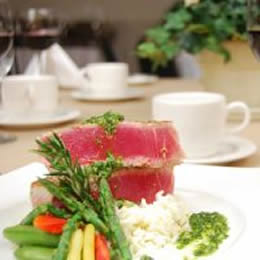By Ben Fuchs | Pharmacist Ben
Mother Nature is nothing if not abundant. Just think of how many birds and bees and blades of grass exist in the natural world. Yet while Lady Gaia epitomizes generosity at the same time she doesn’t waste her wealth. That’s why plants grown with artificial fertilizers and pesticides produce less anti-oxidant and other medicinal and nutritional compounds than those grown organically, free of artificial growth inducing and protective chemicals. They simply don’t need to. Because they’re being protected artificially, they produce less of their own defensive molecules, which form the bulk of what we call phyto-nutrients.
 Likewise with the skin. Under ordinary conditions, the skin, when healthy, makes its own moisturizing chemicals. Elements including fats (especially something called squalane, which is has many structural similarities to Vitamin A), fatty acids and vitamins as well as water trapping sugars and proteins form a biochemical complex scientists call the Natural Moisture Factor (NMF) which keeps water trapped in the skin. But if you use a typical standard issue moisturizing cream or lotion, which is composed of wax and oils that function to seal in moisture, the less NMF your skin will need to produce. That means, the more moisturizer you use on your skin, the less natural moisture factors your skin will need to produce and ultimately the drier your skin will be. In other words, the best way to assure yourself of needing a moisturizing product, is to use one!
Likewise with the skin. Under ordinary conditions, the skin, when healthy, makes its own moisturizing chemicals. Elements including fats (especially something called squalane, which is has many structural similarities to Vitamin A), fatty acids and vitamins as well as water trapping sugars and proteins form a biochemical complex scientists call the Natural Moisture Factor (NMF) which keeps water trapped in the skin. But if you use a typical standard issue moisturizing cream or lotion, which is composed of wax and oils that function to seal in moisture, the less NMF your skin will need to produce. That means, the more moisturizer you use on your skin, the less natural moisture factors your skin will need to produce and ultimately the drier your skin will be. In other words, the best way to assure yourself of needing a moisturizing product, is to use one!
The best strategy for keeping skin moist and hydrated is to make sure that you’re ingesting nutrients and raw materials that help the skin make the Natural Moisture Factor. Your diet should include plenty of fatty foods including olives, sardines, salmon and coconut oil. One of the quickest ways to create “xerodermia” (dry skin) is to go on a low-fat or fat free diet. Essential fatty acids, so-called Omega-6s and Omega-3s can help too. 10 to 20 grams of Omega-6 and 3 to 6 grams of Omega-3 are probably enough. You can get what you need with a daily dose of 6-12 capsules of a quality EFA product like Youngevity’s Ultimate EFAs or 2-3 tablespoonsful of a nutritional EFA oil such as Udo’s Blend. And don’t forget about Vitamin A. As anyone who has used Accutane (which works by suppressing Vitamin A activity) can tell you, depriving the body of this key vitamin will guarantee skin dryness. Use 20,000 international units a day. Make sure you’re getting quality protein too, especially from whey and egg both of which contain the amino acids that form a critical part of the NMF.
Topically, your best bet is to use substances that are already in the skin. These are more likely to be absorbed and utilized and at the same they are less likely to cause a suppressant effect on the NMF. Topical squalane which is typically derived from shark liver or olives is wonderful, although it may be a bit heavy for some. Vitamin A and a special form of Vitamin C with a fatty consistency can be very effective as well. Hyaluronic acid has potent water-trapping properties and can be an effective hydrating substance, and likewise for long-chain sugar molecules that are found in seaweed, aloe and noni. You can purchase dried seaweed products like Nori or Kelp or Kombu and hydrate them with some aloe or noni juice and make your own moisture restoring mask.














